Sometimes you feel like a nut. Sometimes you don’t. Why are we so fickle when it comes to our favorite state parks? Maybe we’re just spoiled. In the Lone Star state, we have some 94 state parks, historic sites, and natural areas to choose from. Who isn’t smitten by the majesty of sculpted Palo Duro Canyon, the poignancy of sacrifice at the San Jacinto Monument, or the immutable timelessness of Enchanted Rock? Who indeed! But sometimes we seek something simpler, something plain without celebrity. Not everyone craves an atmosphere of action and adventure, not always do we seek amusement or recreation. Sometimes we just want to quietly chill in the shade, the water lapping at our feet. Blanco State Park was made for just those times.
Located on the southern side of Blanco (completely within the city limits) at U.S. highway 281 and Park Road 24, this place is more like a venerable city park than a state-run attraction. It took the Civilian Conservation Corps (CCC) only a year to build. At 105 acres, the park hugs a 1-mile stretch of the spring-fed Blanco River. Only a CCC-built one-lane bridge separates the park grounds from the hurried (and noisy) comings and goings of busy Texans along the highway. It commemorates an old-fashioned roadside rest stop for travelling Texans to pull off and relax, swim, picnic, or camp.
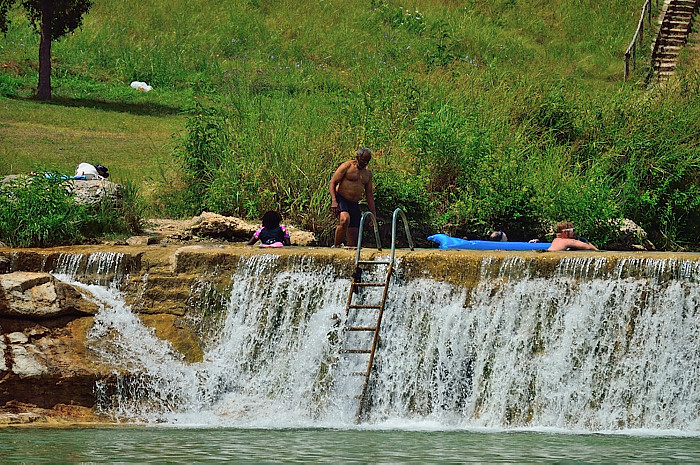
At this park, it’s all about the water. That’s why people come—to play, tube, kayak and cool themselves in the glorious water. It’s safe for kids to splash and play in the water below the dam but there’s also a section of much deeper water to put in a boat, fish from the bank or just float the current. You can swim (at your own risk) anywhere along the river you like. The deeper area also contains a nostalgic rope swing over the water.
You can find picnic sites with camp stoves on both sides of the river; however, the main center of activity is the CCC-built picnic pavilion. Overlooking a gently terraced hillside, the limestone and timber structure, with its stone walks and stairway to the river, beckons people to party in the water. Two so-called “barbeque tables,” fully 70 feet long when viewed from one end, appear as a vast open-air banquet table, suitable for Robin Hood and his merry band to enjoy an outdoor feast. Lush green grass descends the hillside under the shade of mature pecan, cottonwood, sycamore, and bald cypress trees. Tame geese and ducks waddle around freely as the sunlight filters through the trees, tracing trapezoids of light on the grass. It’s reminiscent of one of those European paintings of a bucolic old-time, summer picnic.
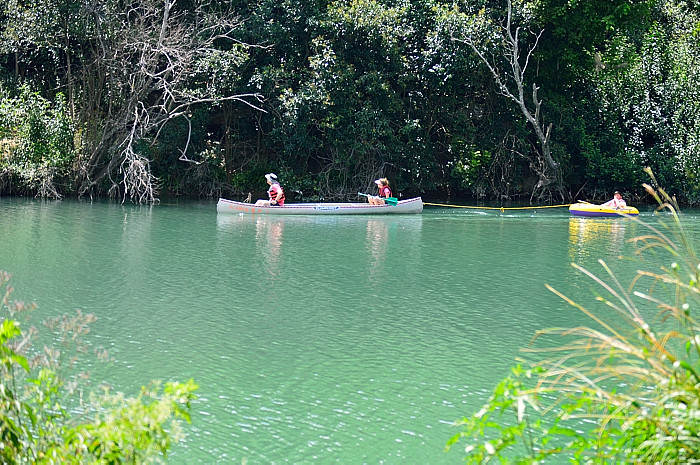
Park staff encourage enjoyment of this stretch of the river by offering float tubes and kayaks for rent. You can also bring your own water toys and boat (electric motors only), enjoy the nearby RV or primitive campsites, or try your luck at pulling bass, channel catfish or perch from the river. The park stocks rainbow trout in the winter. Another way for patrons to enjoy the river is to reserve one of several screen shelters nestled along the bank. Each has a ceiling fan and is wired with electricity for your special night under the stars.
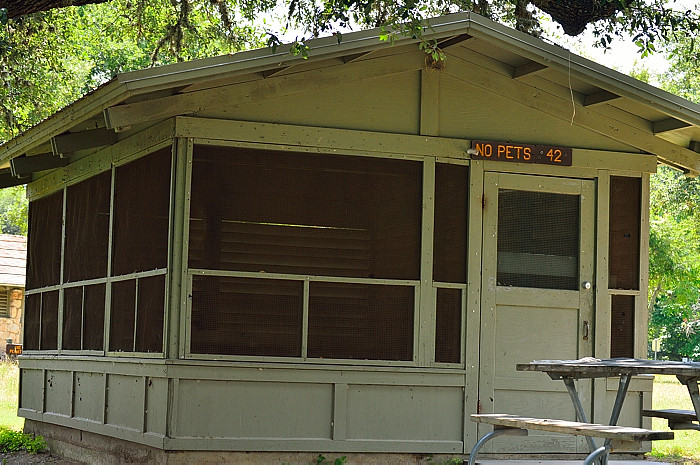
Blanco State Park is not only one of the smallest parks but it’s also one of the earliest. Established by the Texas legislature in 1933 from a combination of donated and purchased land, company 854 of the CCC converted this riparian habitat into the quiet little enclave that it is today. They put in the dams, bridges, swimming areas, picnic spots, structures, and roads. Unlike some parks, evidence of the CCC’s work can be easily found here. You can enjoy one of many CCC-built stone benches or stone picnic tables; you can also hike to see the remnants of an old pump house. Another distinctive artifact is a stone chair, perched above the campground like a throne, where it once offered an expansive panorama of the park and river. Unfortunately, the view is now blocked by overgrown wilderness.
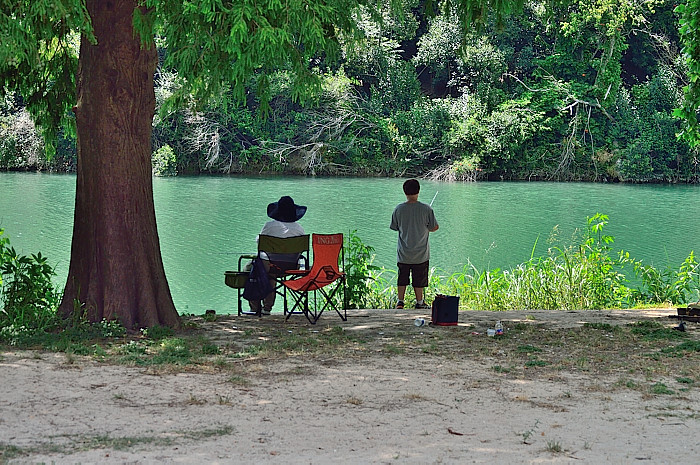
The Blanco River was named by Spanish explorers for its prehistoric white limestone ledges and river bottom. Like many rivers in the Texas Hill Country, there is great variability in the Blanco’s flow. It runs some 87 miles southeast from the Middle Trinity Aquifer through Kendall, Blanco and Hays Counties, eventually joining the San Marcos River downstream. It’s shallow most of the way, except where dammed, and travels both above and below ground, leaving parts of the riverbed dry along its course. The upper reaches of the Blanco River are hilly, and the river’s slopes are frequently steep. As it reaches the Balcones Escarpment near San Marcos, it widens and its slopes moderate. Like many Central Texas rivers, the usually easygoing Blanco can misbehave during heavy rains and become a raging bull, as it did in 2015.
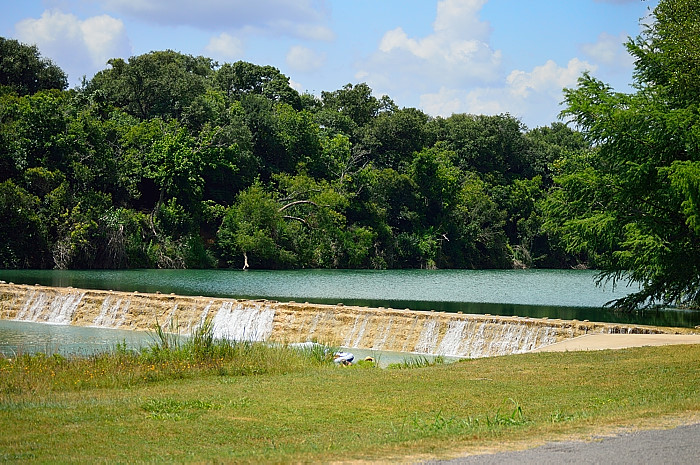
In May of 2015, after record rainfall on top of already saturated soil, the river swelled and rose an astounding 30 feet. As the water gushed and continued its path, it devastated the park and the land downstream, cresting just below the U.S. Highway 281 Bridge. In the aftermath were uprooted trees, branches, sand, silt, and trash in all directions. The high water even lodged uprooted trees 20 feet high in the surviving forest. There are still signs of this historic flood as you walk through the park—trees lean in the direction of the torrent and debris piles are still trapped in the heavy brush along the river.
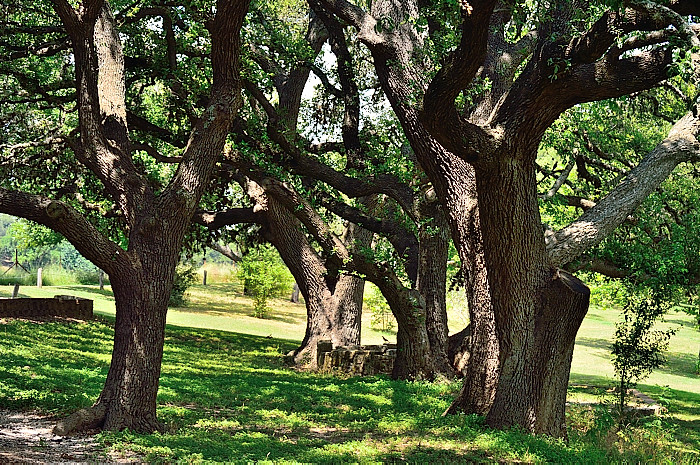
For such a small place, would you expect to find wildlife? There are, of course, the typical Texas critters to be found in and around a riparian habitat (egrets, frogs, turtles, raccoons, skunks, etc.) but there’s also animals we might consider “special.” As for turtles, I’ve seen red-eared sliders before, but soft-shelled turtles, musk turtles and cooters are all foreign to me—and they all live here. I’m familiar with Mexican free-tailed bats, but the park is also home to Eastern reds, cave myotis and tri-color bats. No wonder mosquitoes were blessedly absent during our visit! It’s not unheard of to glimpse a blue heron stalking his breakfast along the top of the dam or a flock of mallards making a pit stop along their route for a quick rest and refuel.
Given the small geographic footprint, don’t expect long looping trails that tax your navigation and planning skills. Hikers seeking a challenge need to look elsewhere. There are only two short trails in the park, a two-miler, and a half-miler. One passes by a busy bird blind and winds around by the old stone pump house. The other, the Caswell Nature Trail, rambles through the trees along the southeastern bank of the river. Both are perfect for introducing young folks to the charms and enigmas of Mother Nature.
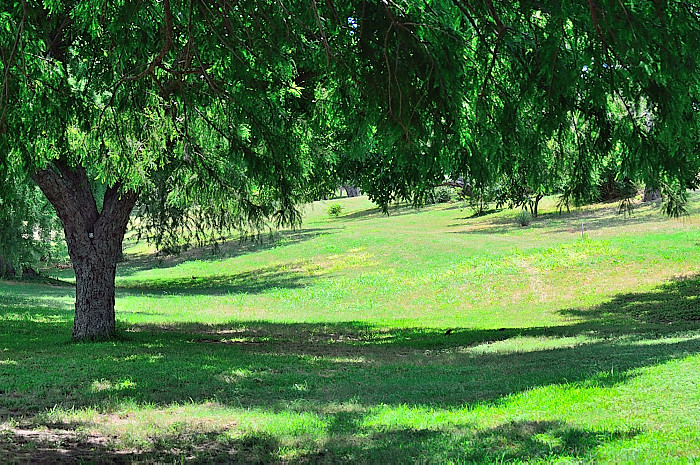
After a long gray winter, the need to get outdoors can be overwhelming. If you’re the kind who enjoys simple pleasures, make your plans now (before summer gets its teeth) for a quiet retreat without a lot of hassle and fanfare, and some fun in the sun. If I were to do a commercial for Blanco State Park, I would say it’s a perfect compromise for families or grandchildren: you can put a pole in the water from a shaded lawn chair, you can refresh yourself floating the current or you can watch after the youngin’s at the low water “splash and squeal.” Afterwards, work off your lunch with a short hike, followed by a long and lazy afternoon around the water. And just consider, what kid wouldn’t be thrilled to spend the night in a screened shelter, lulled to sleep by crickets and river sounds as the old moon scrapes open some clouds and lays down a path of light? It’s all waiting for you within a 90-minute drive from Bastrop. Can you imagine a better spring or summer day?
By: Larry Gfeller


